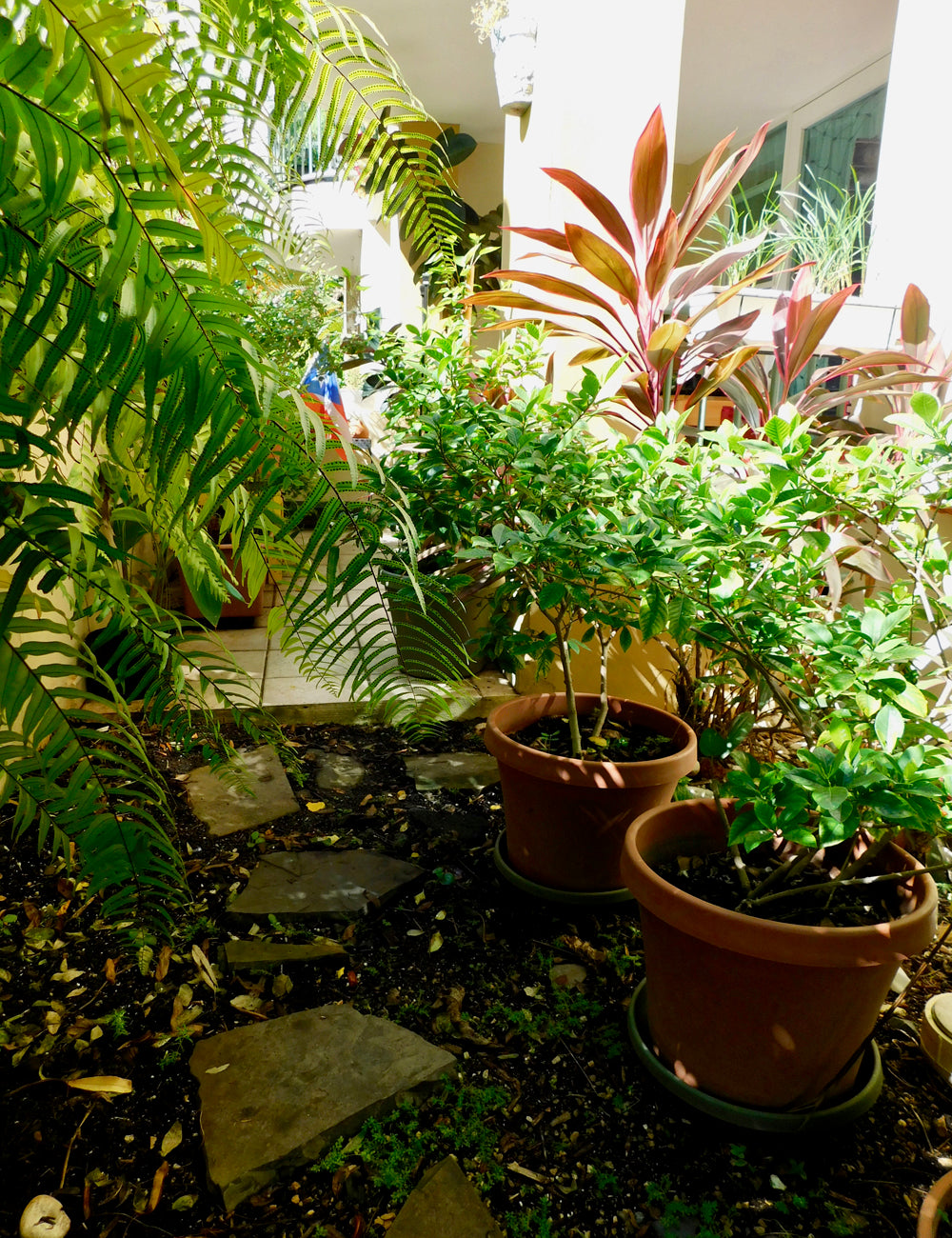The Horticultural Therapist is In: Perla Sofia Curbelo-Santigo
Feeling a little trapped in these times, or a bit stressed? Go into your garden.That’s the prescription from Perla Sofía Curbelo-Santiago. “Plants and gardening are tools for wellness,” says the founder of Agrochic.com who also is a horticulture therapy advocate. All the pieces of her background combined to create the perfect ally: an undergrad degree in psychology, an early love of gardening with parents who own a coffee farm in Puerto Rico, and a certificate in Horticulture Therapy. “My calling is to promote horticulture for wellness, particularly for mental health.” For those who speak Spanish (Perla is Puerto Rican), her advice is available on a podcast to be launched in January and on her website Agrochic.com. Her best credential, however, is this: She keeps a pruner in her purse.


Janet Mavec: How have you been coping with the shelter in place situation?
Perla Sofía Curbelo-Santiago: I garden, read a lot, bake, watch Netflix, style my home office, and, of course, use my garden to rest, vent, and support my mental health. The places where I feel safest are at home and in the garden, and when I visit garden centers. In Puerto Rico, with a second rising of Covid-19 cases, I’m promoting gardening with a more conscious and functional purpose.
JM: What’s your favorite season?
PSCS: My favorite season is FALL! The colors, the slow pace, and the baking season! I´m reminded to slow down; learn from nature to age gracefully, and accept death as part of the natural cycle.
JM: What’s your top 3 favorite plants?
PSCS:
1. Hibiscus. In Puerto Rico, they bloom almost the entire year. I have six varieties and want more for my garden. They are so colorful and are great for attracting pollinators.
2. Lantana. They are so delicate, attract pollinators, and smell lovely—I would love to have a perfume based on their fragrance. I have one white lantana and a pink and yellow on the balcony that I can admire from the kitchen. I love when the butterflies invade it.
3. Pothos. It is one of my favorite houseplants. It’s easy to care for and fun to work with. I´m doing topiaries with some of them. I have the golden pothos, silver, pearls and jade, and the marble. And yes, I´m looking forward to other varieties as well.


JM: What plant gets no love and why should we pay more attention to it?
PSCS: In Puerto Rico, I think using hibiscus in a more intentional way: hedges, entrances, topiaries. Take advantage of their blooming!
JM: What would you like people to know about their garden?
PSCS: How they can adapt their garden or gardening activities to their own needs. They will feel more empowered and will be able to enjoy more of what they already have with less stress.
JM: What are the things that are most important to you as a gardener?
PSCS: How to use my garden and indoor plants as a supportive tool for my mental health and wellbeing.


JM: What’s the one garden tool you can’t live without?
PSCS: My pruners and garden scoop. I even keep a pruner in my purse. You never know when you come across a plant that you would like to take a cutting for propagation (of course, I will ask first). The garden scoop helps me to control any soil spill when I´m gardening.
JM: What gardens and institutions have influenced your work?
PSCS: Organizations like Garden Communicators International, which every year held its annual convention in a different city, gives me the opportunity to explore so many public and private gardens. Last year (2019) was in Salt Lake City and we went to several gardens on that trip, like Thanksgiving Point (Ashton Gardens).
Also influential to my work are the American Horticultural Therapy Association, the recently formed BIPOC HORT Group; the Spanish Association of Social and Therapeutic Horticulture (AEJHST), and Chicago Botanic Garden, where I got my Horticulture Therapy Certificate last year (2019).
JM: When was the last time you hugged a tree?
PSCS: This morning on my patio. I have a few small fruit trees that I can´t keep my eyes or hands off of (guava, soursop, lime).


JM: What’s a sign of respect that you give to nature’s green beings?
PSCS: Contemplation. Observation. Acknowledgement.
JM: What are your favorite resourceful/inspirational books on gardening?
PSCS: “Your Well-Being Garden: How to Make Your Garden Good for You,” A very approachable book by Alistar Griffiths and Matt Keightley on how you can make small changes in your garden based on scientific evidence and good for your health.
“The Earth in Her Hands: 75 Extraordinary Women Working in the World of Plants,” by Jennifer Jewell. An amazing source of inspiration, particularly during the pandemic.

JM: What’s new or coming up for you in 2021 that you’d like to mention?
PSCS: This year, I have been concentrating on my online work with Agrochic.com. I’ve expanded my services into virtual workshops and developed a virtual wellness program (Agrochic en Casa). It will help people deal with stress through plants and gardening. Also, my podcast, “La verdura de hoy” (Today´s Greenery), launches January 7.
More advice:
If you want to use gardening to relax, start with 5 to 15 minutes a day. Set a space indoors or outdoors where you can go and involve yourself in any activity garden related like watering/misting your plants, repotting, cleaning pots. Use aromatic plants like mints, rosemary, lavender and tarragon to create a sensory garden that will stimulate all your senses and also be handy for dishes and drinks.
Spending time gardening and/or in Nature can help you lower your heart rate, and even your cortisol levels (known as the stress hormone). You will be able to focus even better in those tasks that demand more of your attention.
And so, onto 2021 whatever it may bring!!

Perla wearing Janet Mavec Oyster earrings and bean necklace.